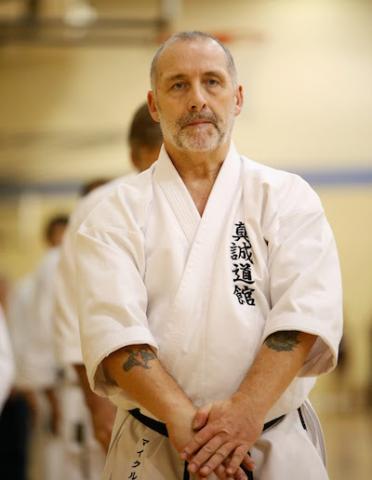Getting hit doesn't hurt (But love sometimes does)—Part 2
July 1, 2016
With an estimated 50 million karateka in the world there are no figures that I am aware of to demonstrate what percentage have been training for more than a few years. Certainly, given the direction of karate's growth over the past fifty-years, it wouldn't be too outrageous to suggest that a greater value has been placed on quantity over quality. So what happened?
Getting hit doesn't hurt (But love sometimes does)
June 15, 2016
Getting hit doesn't hurt...that's not only the name of this article: it's a fact! It was also a discovery I made many years ago when, as a young man caught in a downward spiral of violent behaviour, my life was heading to the bottom faster than a rock in water. Unable to take control of the rage that burst to the surface with increased regularity, my teenage years bore witness to a boy broken by his inability to alter course. Appreciating that it was my fear of being hit, and not the actual pain I might feel when a blow landed, was a massive turning point in my sprint to the bottom. It was a fear that lay at the heart of my hesitation to start a fight; but once that fear was removed, my downward trajectory grew quickly steeper.
Redemption: A Street Fighter's Path to Peace
May 16, 2016
Being born the fifth child into a working-class family of six children guaranteed I had a fight on my hands from the very beginning. That my siblings and I grew to be productive members of society suggests that my childhood, although often chaotic, served me well. Dublin, Ireland, was not the attractive city in 1955 that it is today, so my birth on the fourteenth of May that year, in the upstairs front bedroom at 88 Kylemore Drive, rekindled thoughts in my father's head of returning to England. And in 1958, when I was three years old, the family moved to Manchester in the heart of England's industrial northwest.
The Art in Martial Arts
July 28, 2014
For many practitioners, the phrase “martial arts” doesn’t do a particularly good job of encompassing the complexity of the systems we study. There is also a certain oxymoronic tension between things martial and things arty and serious trainees often prefer to emphasize the physical efficacy of these systems.
Taekwondo-A Powerful Tool for Self-Defense
May 14, 2012
The martial art of Taekwondo, literally meaning "art of hand and foot fighting," is more than two thousand years old. Yet its physical and spiritual content have never been so vigorously sought after and practiced as it is now.
Zhang, San-Feng and the Ancient Origins of Taijiquan (References)
-
November 21, 2008
The origin of Taijiquan is a controversial issue. Some trace Taijiquan to the Chen family in the 1600's and others trace the art further back to Master Zhang, San-Feng. Both are correct. And neither of them created Taijiquan.
Outside Looking In
-
August 25, 2008
Martial art training is complex and significant and can be important to people for various reasons. I believe that it’s important, however, for everyone to be very clear as to what the reasons are for training.
YMAA 25 Years
-
February 6, 2008
On October 1, 2007, YMAA celebrated its 25-Year Anniversary. There were many phone calls, letters and emails of congratulations.
Traditional Chinese Tai Chi and Kung Fu Silk Clothing
-
October 17, 2007
Traditional Chinese silk clothing has a long history, dating back to the 27th century BC. Once the skill of spinning silk, or sericulture, was discovered, the Chinese made silk exclusively for 3,000 years without divulging the secret of the process and it was a valuable commodity for trading.








